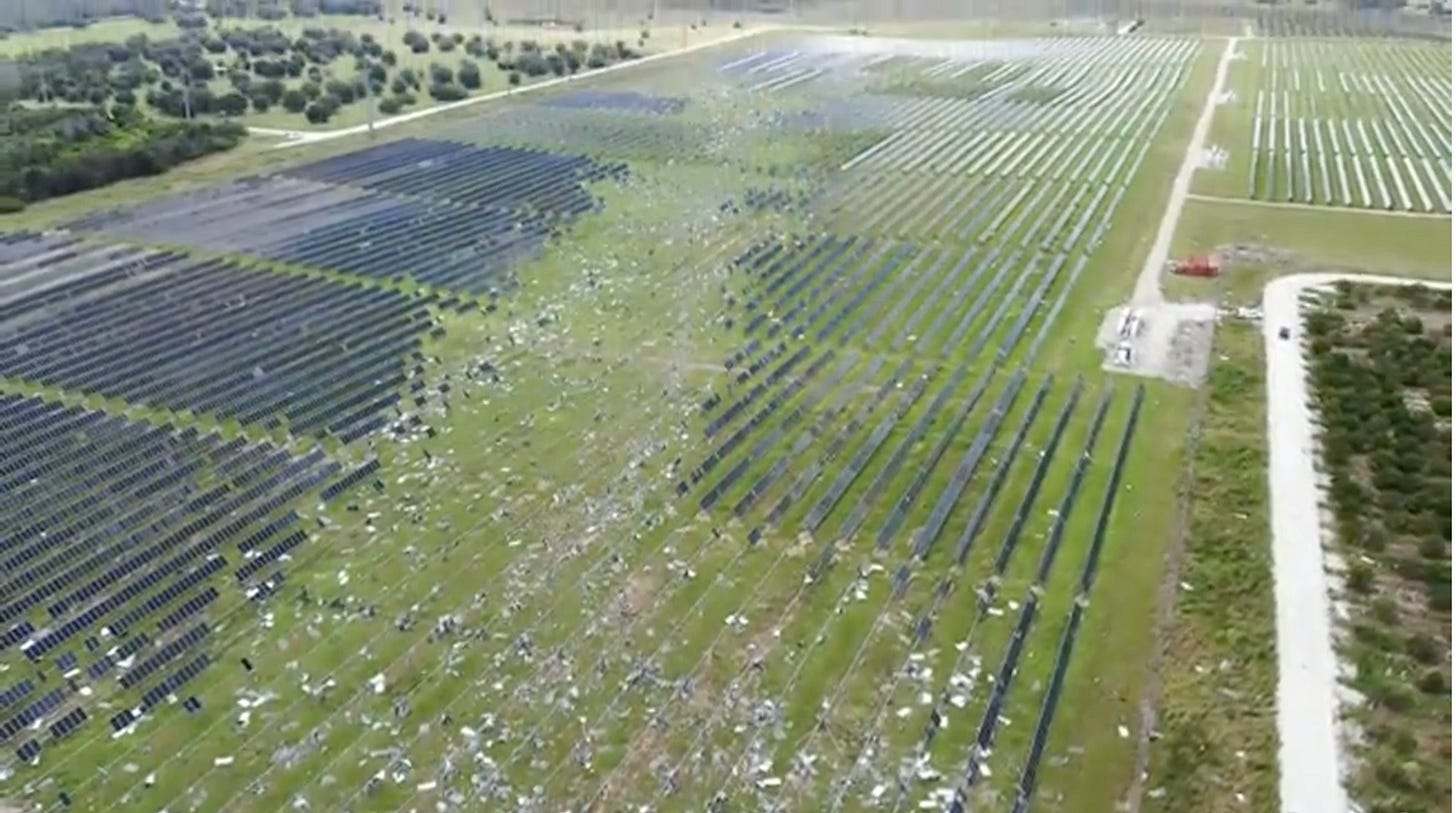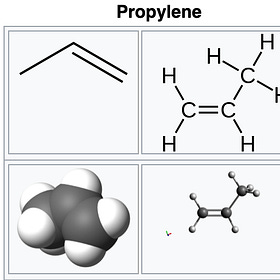
Following the devastation left in the wakes of hurricanes Helene and Milton, most reporting focus has been on humanitarian recovery efforts. And rightly so. Unfortunately, other side-effects of the storms end up glossed over, when they should rightly raise many questions and serious concern.
When Milton meandered across Florida, one victim of its vicious winds was the Lake Placid Solar Power Plant pictured above. As you can see, a field of panels was plowed through like a toddler tearing down Legos. Thousands of these photon-gathering frames were fragmented beyond repair.
Since solar is saluted as a sustainable solution for “green” power generation, it seems we should examine the outcome of this solar farm’s exposure to extreme weather.
I’ve written before about the detrimental effects of solar (and wind) on the environment.
The dirty truth about clean energy
Over the past couple of decades, there has been a growing movement to eliminate the use of so-called fossil fuels and to replace such energy sources with green and renewable products. Even beyond that, there is a push to eliminate drilling for oil completely, all in the name of
I spoke of the farce of “green” energy eliminating the fossil fuels upon which the green energy industry depends for the manufacture and maintenance of these devices. Now look again at the picture. Aside from taking up so much “green” space to (only potentially) generate even a fraction of what a traditional or nuclear power plant can produce in a similar footprint, focus on the debris. That can’t be good for the environment. Clean-up on aisle four!
Setting aside the chemical contamination caused by the catastrophic crushing of these panels, consider the impact to those who rely on the power “generated” (collected?) by this farm? How long will they be without electricity? It is one thing to have to replace poles and lines, but solar panels? What kind of timeframe would you expect to replace, let’s say, 1000 panels?
What will be the expense of replacing those panels? Do you think a power company will just eat the cost of losing the equipment, or will per-kWh charges increase in order to offset the outlay?
Something many don’t think about with these solar farms is that, even without an event like a hurricane ravaging the range, the energy-collecting efficiency of solar panels degrades over time, requiring replacement every 20-40 years (depending on the information source). That can prove a rather pricey project.
Even prior to any degradation, panels only produce power at peak efficiency when skies are clear.
This all for a power source that is only available during sunlight hours. At least, if there is nowhere (such as batteries - more impact to the environment, more expense, and more space) to store excess energy produced (if there is any).
Traditional power plants, and, if we want to be more environmentally friendly, nuclear power plants, do not suffer the fragility of the solar farm. They do not suffer the same kind of degradation of efficiency, though they certainly require maintenance. They also are able to produce power day or night, rain or shine.
While utopians may believe solar to be the future of “clean” energy, the aftermath of these storms is more evidence that these quixotes are merely tilting at windmills.



Solar panels are pretty cool... however they are being used all wrong! Throw a few on a roof, okay. Use them in remote locations. But these "farms" are an absurdity. I drive past many of these on the drive between Minnesota and South Dakota.
Also, the big fly in the ointment is that even if ALL of the people in the US converted to "green" energy, assuming it was efficient, which it is not, and assuming we could cut out all fossil fuels, which we cannot, the US puts out something like the second smallest carbon footprint of all the major countries. Over 3/4 of the carbon output is by everyone else. So, even if we totally removed our countries footprint, it would make very little difference in the big picture anyway. We are by far the most responsible country in this area already. If you wanna make a real difference, you'll have to convince everyone else to do what we are already doing now.